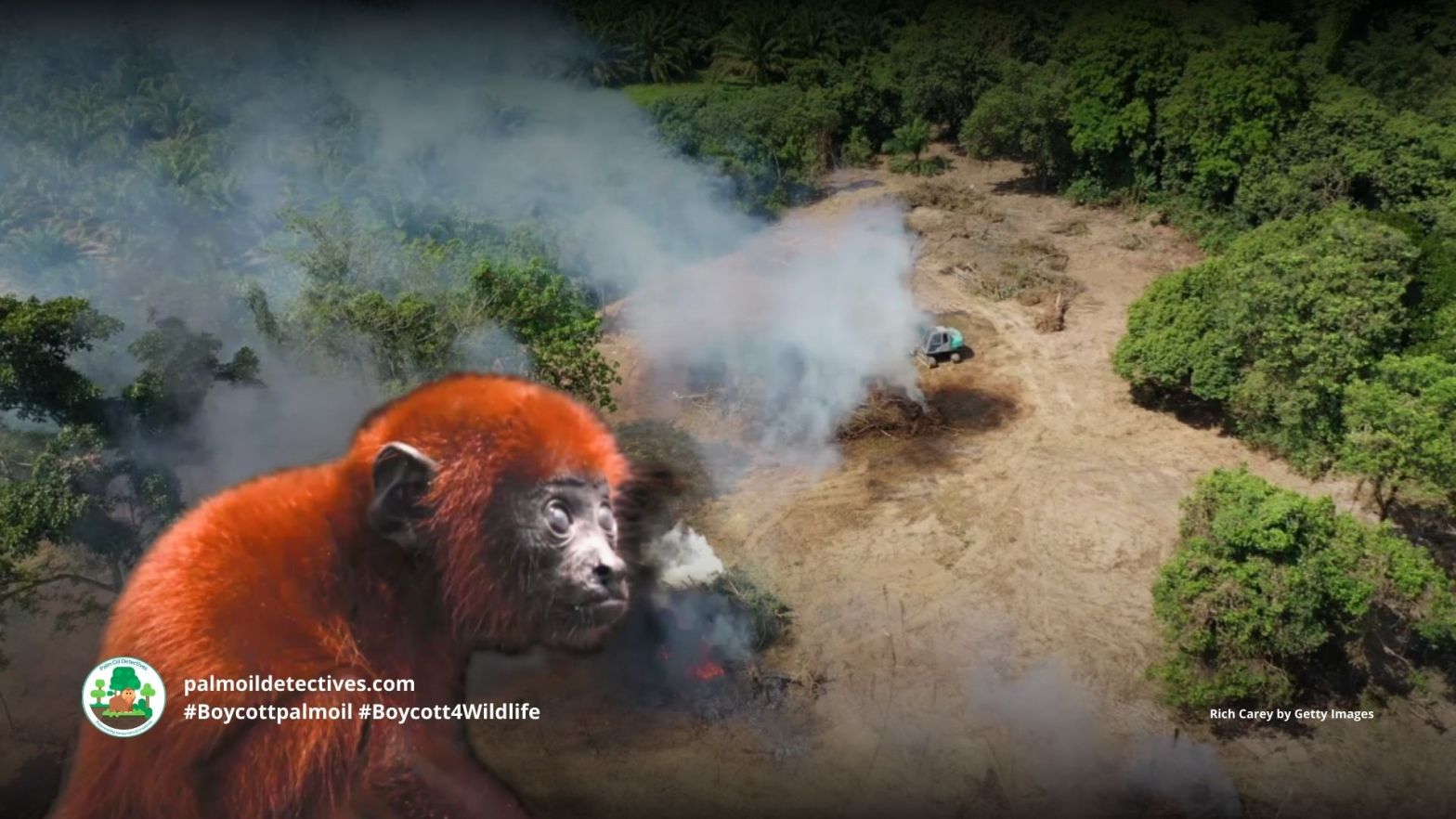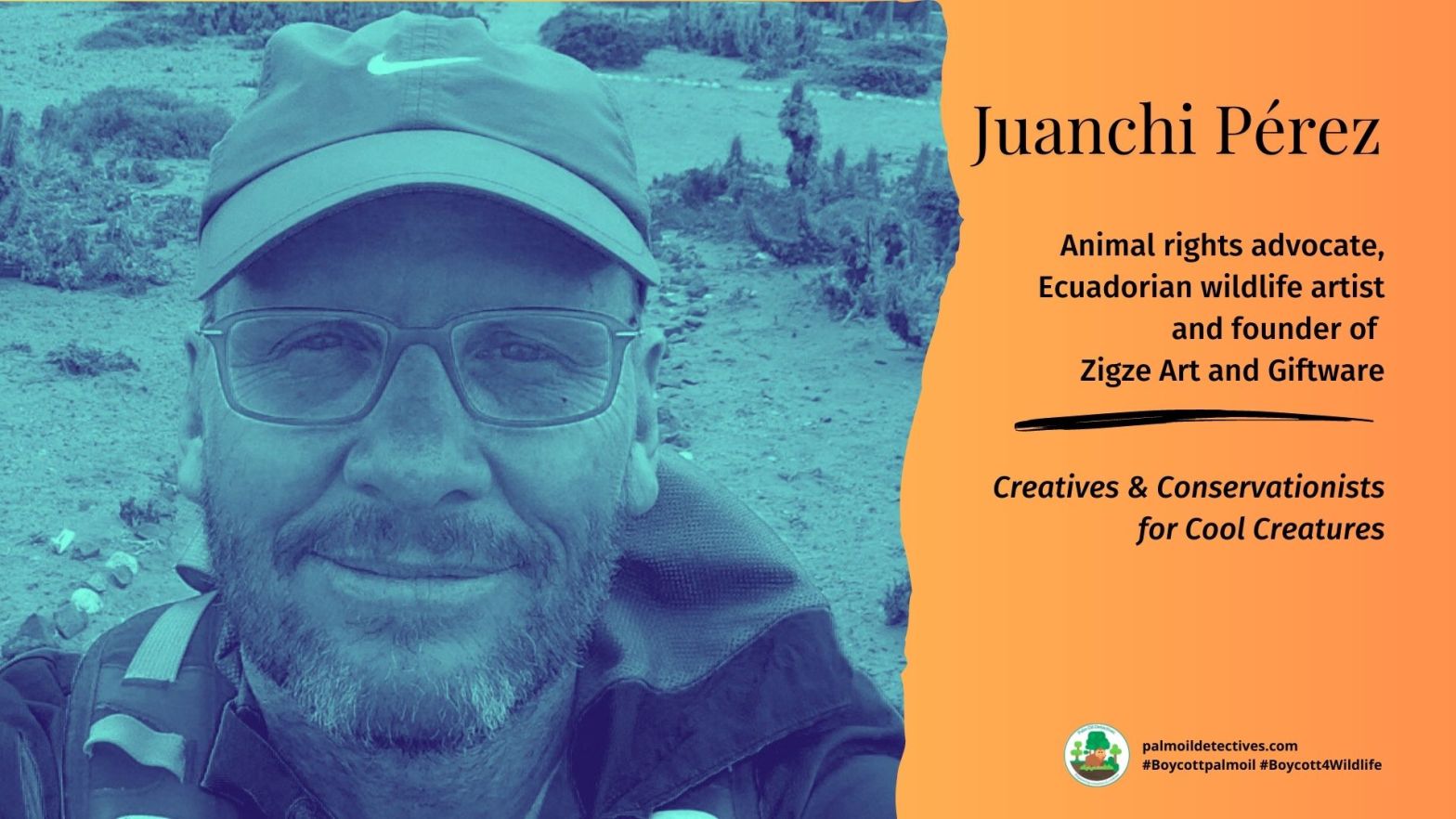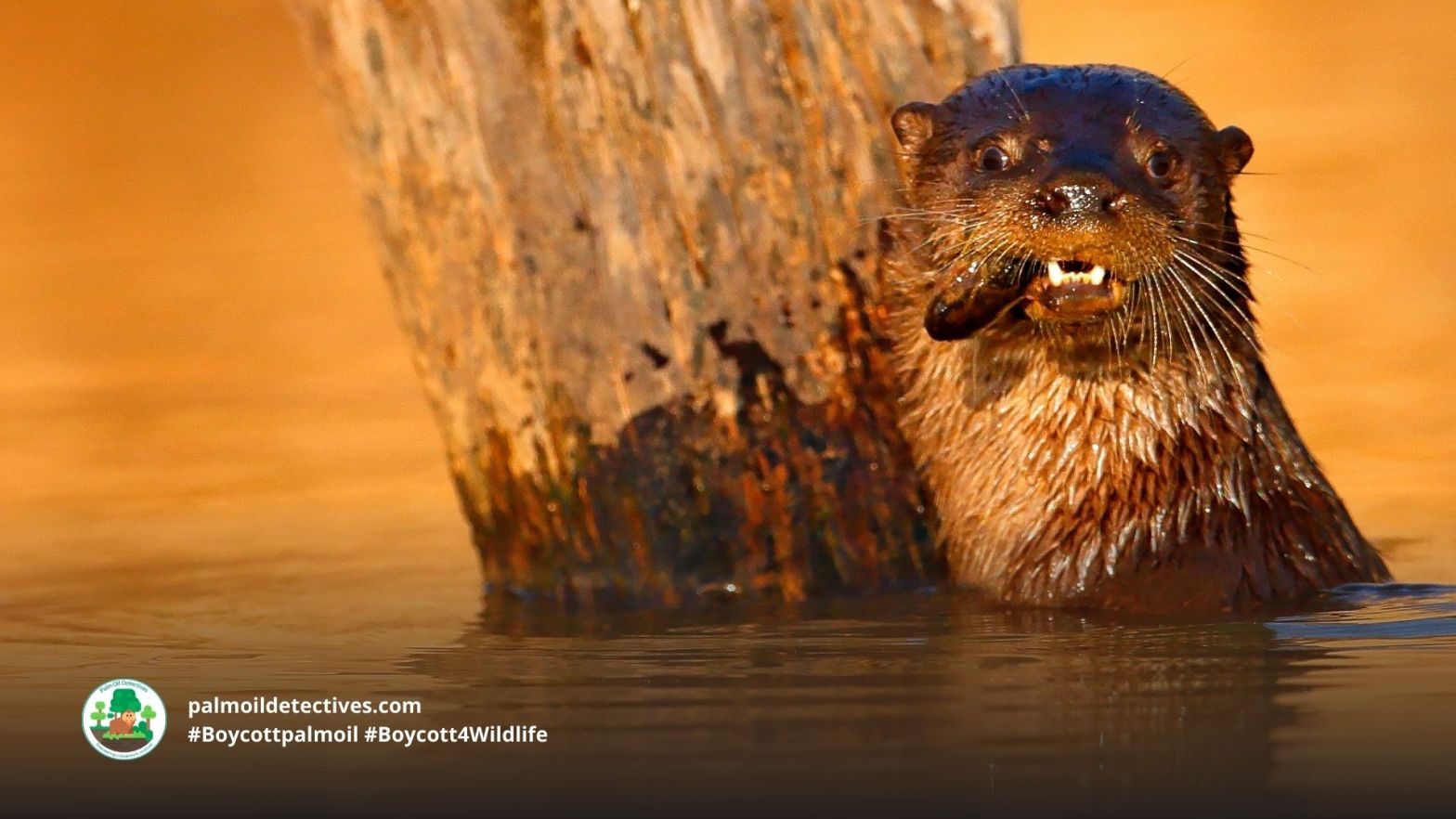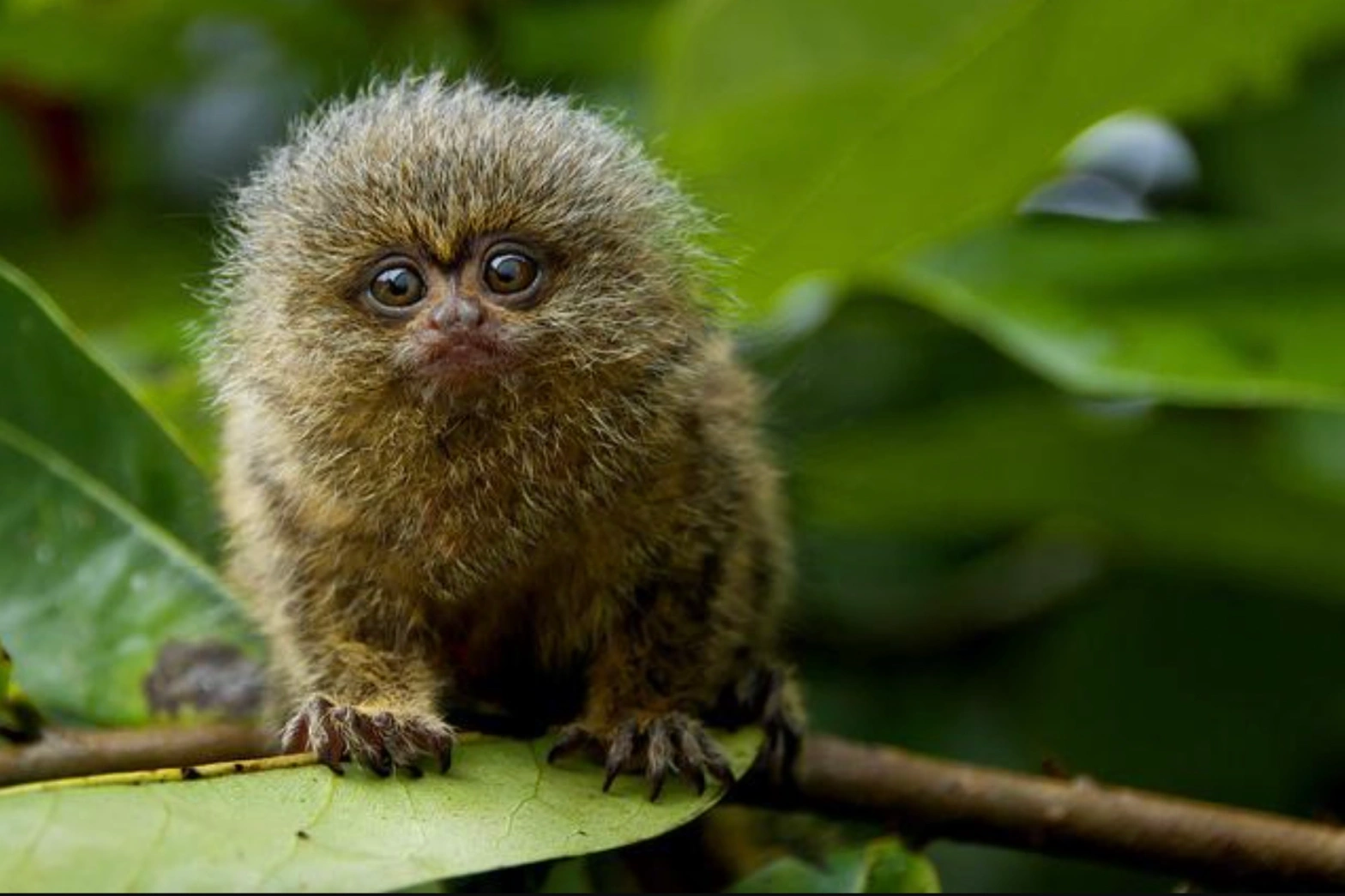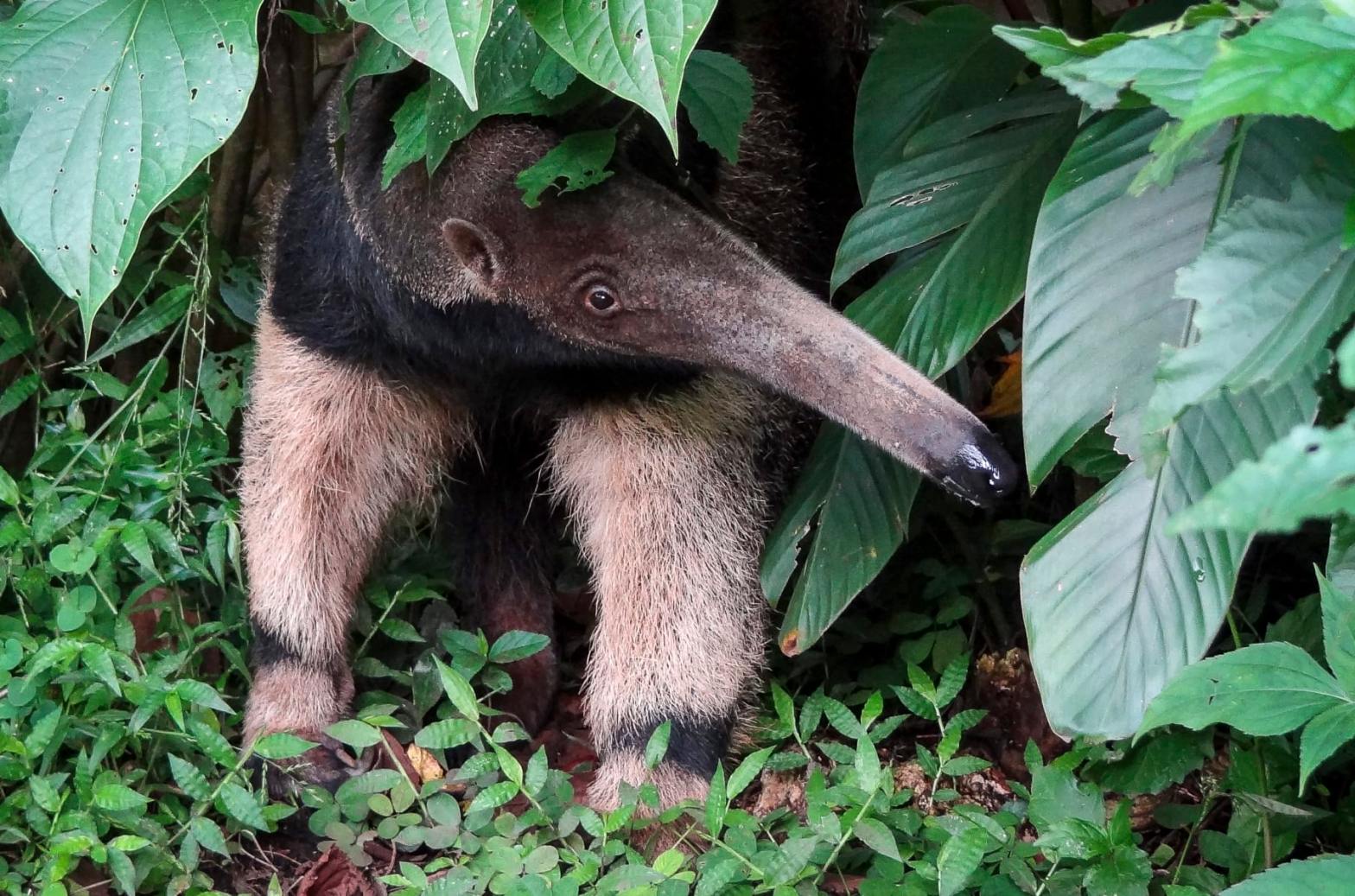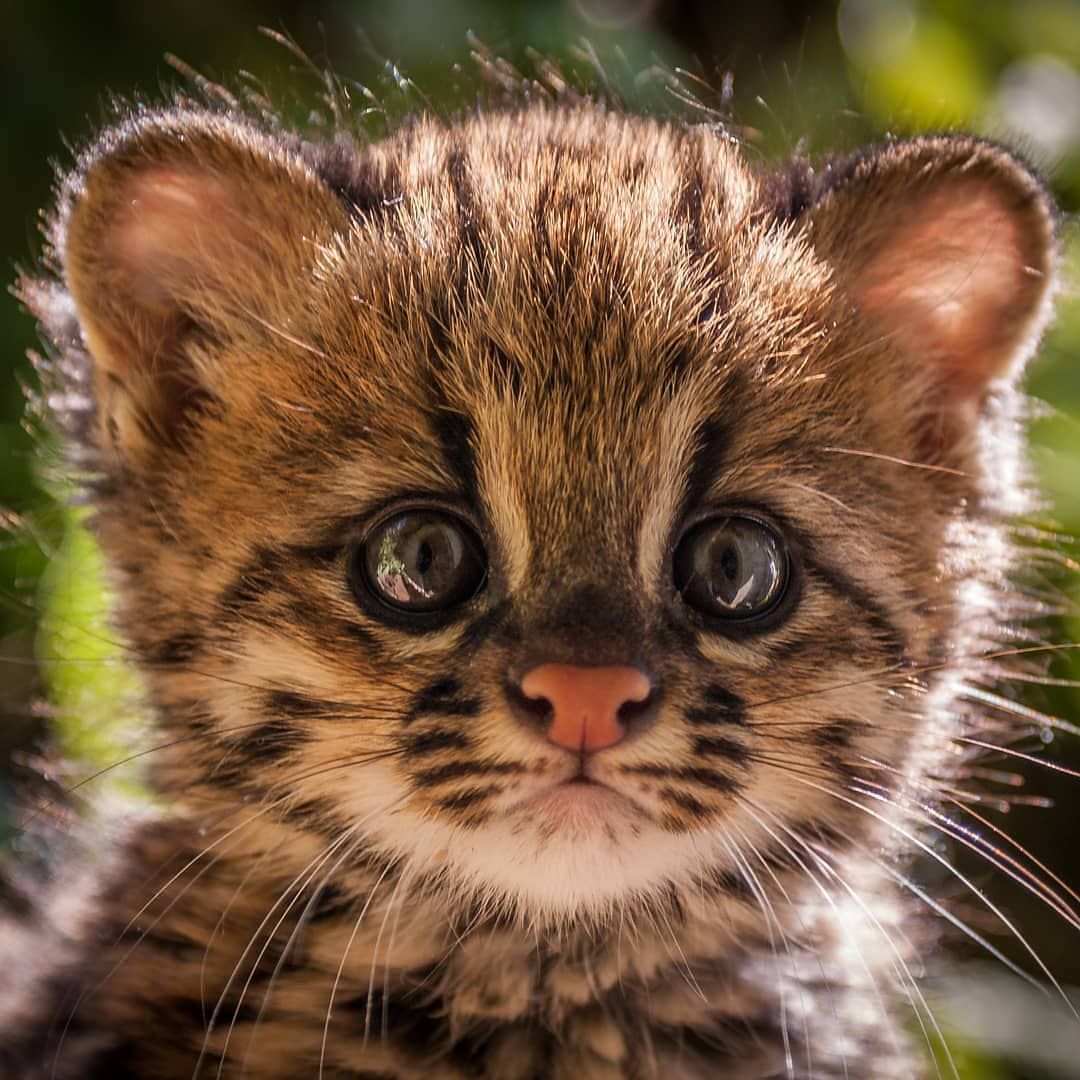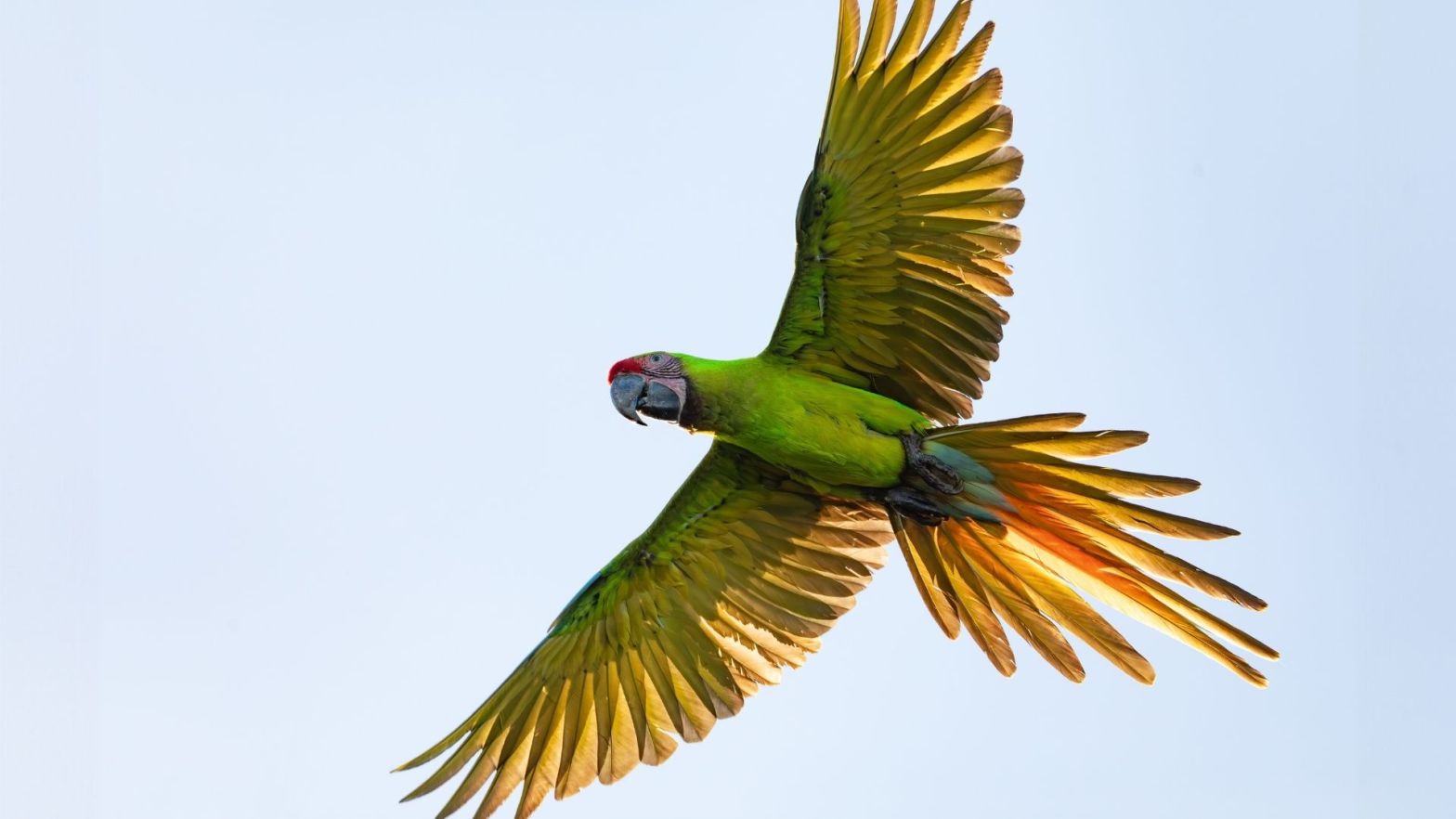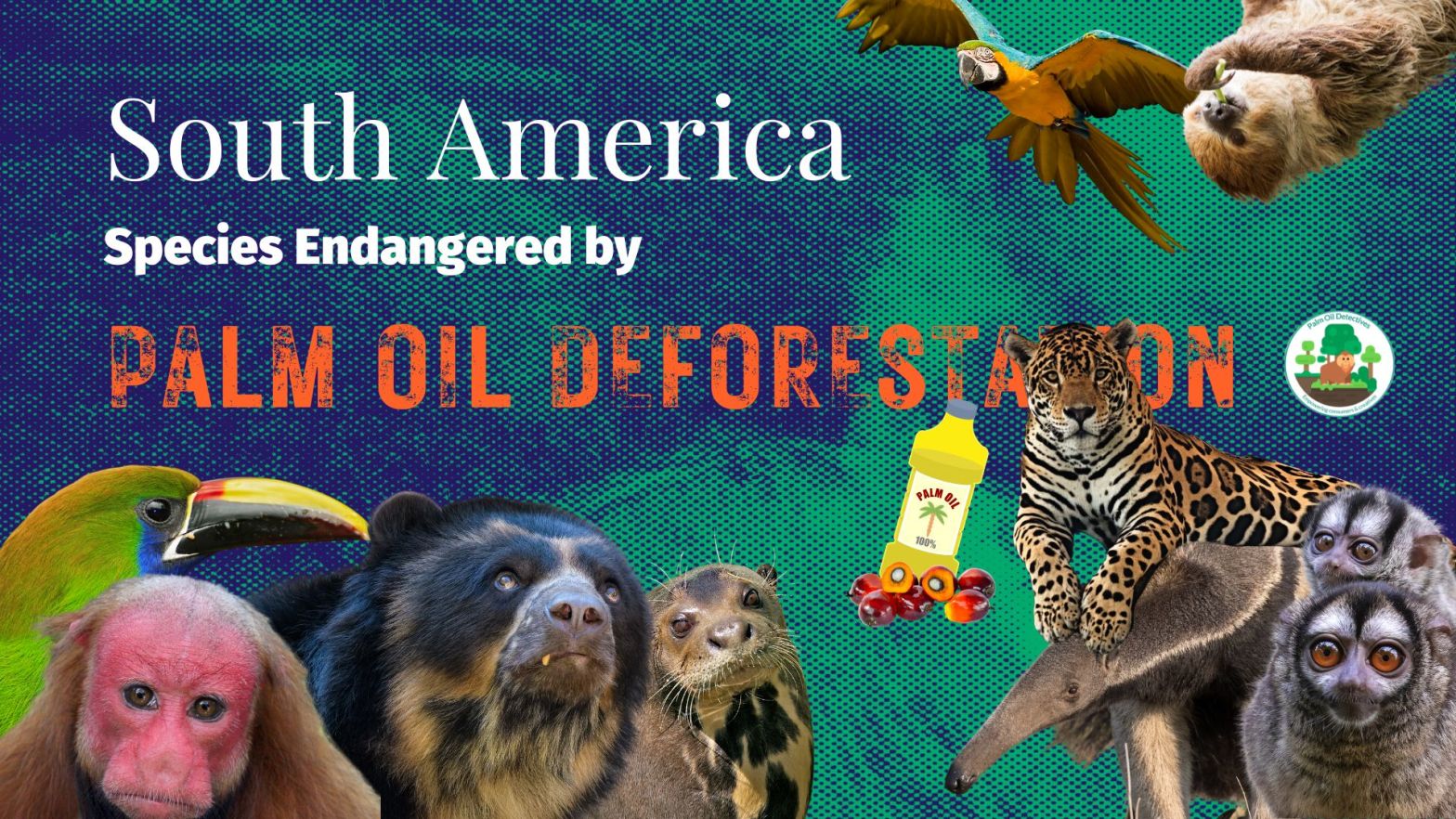Red howlers are the largest of the howler monkey species. They have dense fur that ranges from brown to dark red, with gold or bright orange undersides – the colour can vary based on their age and habitat. Their bare, dark faces contrast with the surrounding fur. They have stubby noses, wide jaws, and thick beards. Their throats appear swollen due to an enlarged hyoid bone at the base of the tongue. Males are larger, with darker and denser beards. Their tails are exceptionally long, with the last third being hairless underneath, which helps them grip branches better. They face multiple threats including palm oil, soy and meat deforestation, the construction of hydroelectric dams, hunting and human persecution. Help them to survive each time you shop and #Boycottpalmoil #Boycott4Wildlife
Tag Archives: Ecuador
Margay Leopardus wiedii
Graceful, athletic and beautiful feline of the Amazon jungle, margays are small wild cats endemic to South and Central America. Every margay has a unique spotted pattern on their coat. They depend heavily on the rainforest canopy for hunting small mammals, reptiles and amphibians and are thought to mimic the call of the pied tamarin in order to hunt for them. Deforestation for #palmoil, soy and meat along with illegal poaching are devastating to them. Help them every time you shop and be #vegan, #Boycottpalmoil #Boycott4Wildlife
Wildlife Artist and Animal Rights Advocate Juanchi Pérez in His Own Words
Juanchi Pérez is a talented and well-established designer, illustrator and artist from Ecuador who captures the soulful presence of rare rainforest animals near his home.
He is passionate about sharing the magnificent animals and plants of his bountiful homeland with the world. Together with his beautiful wife and daughter, he founded art and giftware brand Zigze several years ago.
Amazon River Dolphin Inia geoffrensis
The Amazon River dolphins, also known as the Boto Dolphins or Amazon Pink River Dolphins are playful, curious and intelligent mammals, the largest river dolphin species in the world. Known for their stunning pink coloured skin they are endangered due to human-related threats like #palmoil, #meat and #soy #deforestation, #gold #mining and #pollution. Help them survive each time you shop and use your wallet as a weapon. Be #vegan, #Boycottpalmoil and #Boycott4Wildlife
Spectacled Bear Tremarctos ornatus
Spectacled bears are known as the ‘peaceful and gentle bear’. They are the only bear living in the tropics of South America. Like many other animals in tropical ecosystems they are endangered. They get their name from their eye-catching markings around their eyes, face and neck that resemble spectacles. Each bear has unique markings like a fingerprint and some bears don’t have them at all.
They are found throughout the thin line of Peruvian rainforest and their range stretches across several countries: Bolivia, Ecuador, Peru, Venezuela and Colombia. Their main threats are habitat loss to mining, logging, cattle farming, palm oil and soy as well as hunting. Protect them each time you shop by being #boycotting meat, be #vegan #boycottpalmoil #Boycott4Wildlife
Giant Otter Pteronura brasiliensis
The agile and graceful tumbling Olympians of the Amazonian rivers, Giant Otters are able to swim 100 metres in less than 30 seconds. They are also known as the Lobo de Rio (the River wolf), Los Lobos del Rio (Wolves of the River) and Ariranha. They are most active in the mornings and evenings and take a siesta during the hottest parts of the day.
The most significant threats to giant otters are anthropogenic pressures of deforestation for palm oil, soy and meat, pollution from mining and climate change. They are also illegally hunted and traded for their pelts or killed in retribution by fishermen. Help them and be #vegan #Boycottpalmoil #Boycott4Wildlife
Jaguar Panthera onca
Jaguars, currently deemed Near Threatened, face a substantial habitat reduction of up to 25% in just over two decades. This decline stems from rampant deforestation for palm oil, soy, and meat, as well as illegal poaching for trophies and body parts. These magnificent creatures also suffer from conflicts arising due to livestock depredation and competition with human hunters for food. Aggravating the issue, Latin America’s widespread agricultural industries, like soy, palm oil, and cattle ranching, mainly serve foreign markets rather than local needs. Let’s step up and use our wallets as a weapons! Be #vegan #Boycottpalmoil #Boycott4Wildlife.
Ecuadorian White-fronted Capuchin Cebus aequatorialis
Ecuadorian White-fronted Capuchin Cebus aequatorialis Extant (resident) Ecuador; Peru Critically Endangered The Ecuardorian White-fronted Capuchin is affected by deforestation and hunting for bushmeat and the pet trade. Forests in the western lowlands of Ecuador have been severely reduced in the past half-century (Dodson and Gentry 1991, Sierra 2013, Gonzalez-Jaramillo 2016). Where habitat loss has fragmentedContinue reading “Ecuadorian White-fronted Capuchin Cebus aequatorialis”
Pygmy Marmoset Cebuella niveiventris and Cebuella pygmaea
The petite pygmy marmoset, the world’s tiniest true monkey, boasts a mix of brownish-gold, grey, and tawny fur. These little wonders, weighing just around 100 grams, communicate uniquely using chemical, vocal, and visual cues to ensure group safety and harmony. Although these marmosets prefer river-edge forests and can adapt to secondary forests, their homes are under serious threat. Rampant deforestation, mining, and palm oil cultivation are eroding their habitats, pushing the subspecies Cebuella niveiventris towards a “Vulnerable” status. The situation is dire, with an estimated 30% reduction in their population in just 18 years. Protect these delicate creatures and their home – use your wallet as a weapon, be #vegan, #BoycottPalmOil, and #Boycott4Wildlife.🌳🐒
Giant Anteater Myrmecophaga tridactyla
Giant Anteater Myrmecophaga tridactyla Extant (resident): Argentina; Bolivia; Brazil; Colombia; Costa Rica; Ecuador; French Guiana; Guyana; Honduras; Nicaragua; Panama; Paraguay; Peru; Suriname; Venezuela Possibly Extinct: Argentina; Belize; El Salvador; Guatemala; Uruguay Vulnerable The Giant Anteater is at risk from habitat loss in parts of their range, and this is a significant threat to Central AmericanContinue reading “Giant Anteater Myrmecophaga tridactyla”
Northern Tiger Cat (Oncilla) Leopardus tigrinus
Northern Tiger Cats, or Oncillas, are sleek, large-eared wildcats often confused with margays or ocelots due to their similarities. While primarily nocturnal, they adapt their behavior according to their environment, such as hunting diurnal lizards in Caatinga. These solitary creatures, though mostly ground-dwelling, are adept climbers. They communicate through purring as kittens and a unique “gurgle” as adults. Their habitats range from the semi-arid Caatinga to the Andean cloud forests. Yet, once targeted for their fur, they now face threats from habitat loss, illegal trade, road accidents, and retaliatory killings. Let’s champion their cause and use our wallet as a weapon: be #vegan #Boycottpalmoil #Boycott4Wildlife.
Palm Oil Lobbyists Getting Caught Lying Orangutan Land Trust and Agropalma
For decades, investigative journalists have been exposing that illegal land grabbing from Indigenous peoples as a regular occurrence in West Papua, South and Central America, Africa and Asia. Indigenous people’s land is being forcibly (and often violently) taken from them by predatory palm oil companies. Major supermarket brands and also palm oil producers that areContinue reading “Palm Oil Lobbyists Getting Caught Lying Orangutan Land Trust and Agropalma”
Baird’s Tapir Tapirus bairdii
Baird’s Tapir Tapirus bairdii Endangered Extant (resident): Belize; Colombia; Costa Rica; Guatemala; Honduras; Mexico; Nicaragua; Panama Extinct: El Salvador Presence Uncertain: Ecuador Baird’s tapirs may look like they are relatives of elephants, but they’re actually closer kin to horses, donkeys, zebras, and rhinoceroses. The Baird’s Tapir is found in forested areas with ponds and streamsContinue reading “Baird’s Tapir Tapirus bairdii”
Great Green Macaw Ara ambiguus
The extremely rare Pernambuco Pygmy-owl is critically endangered on the @IUCNredlist due to massive logging and deforestation for #palmoil #beef farming in #Brazil support this animal’s survival by making art and joining the #boycott4wildlife
South America: Species Endangered by Palm Oil Deforestation
As the lush equatorial rainforests of South East Asia are exhausted, increasingly focus is being placed on parts of Central and South America. Oil Palm is a growing commodity there and is found in Colombia, Brazil, Ecuador, Guatemala and Mexico. Help the rare and beautiful animals of South and Central America to survive the scourge of palm oil and #Boycottpalmoil #Boycott4Wildlife in the supermarket. Learn more

